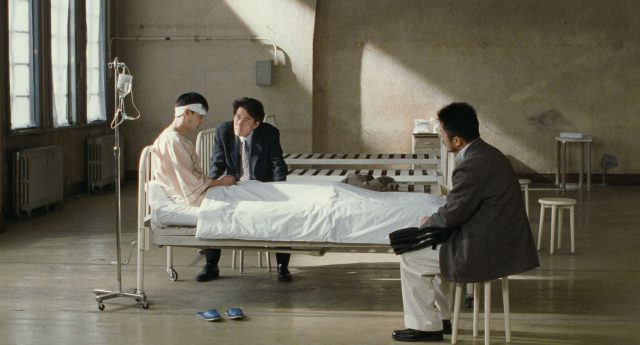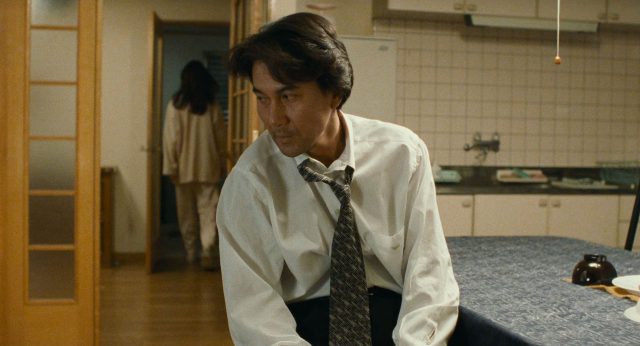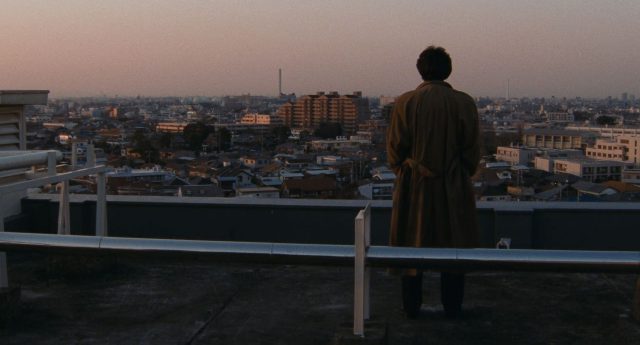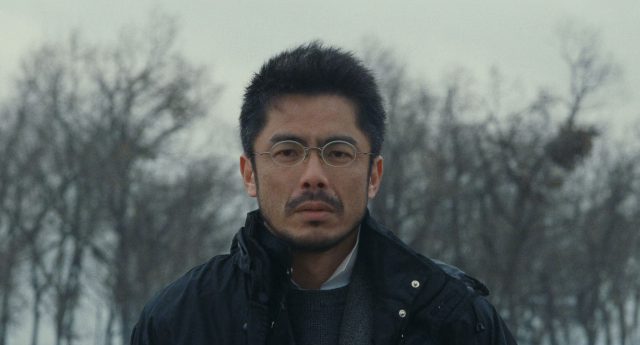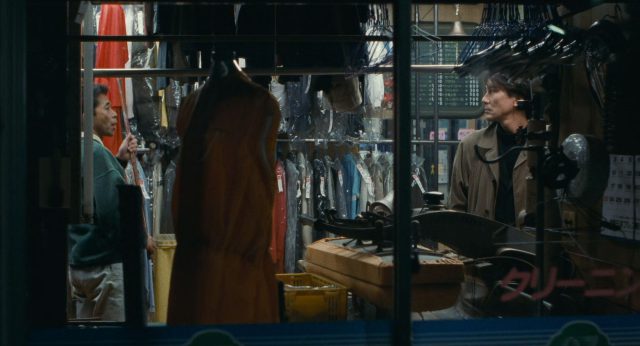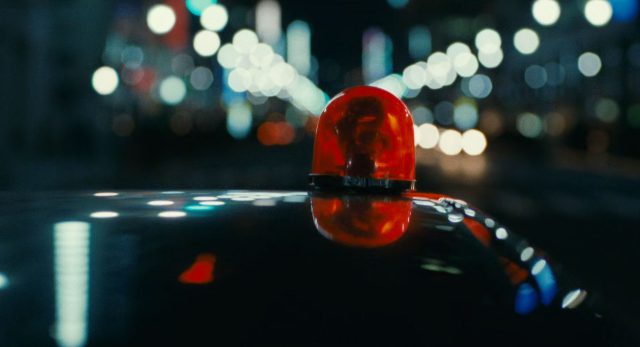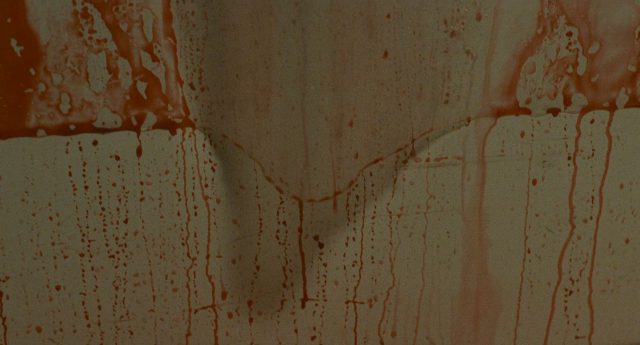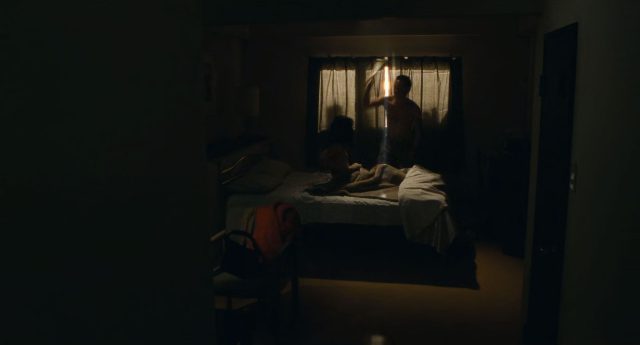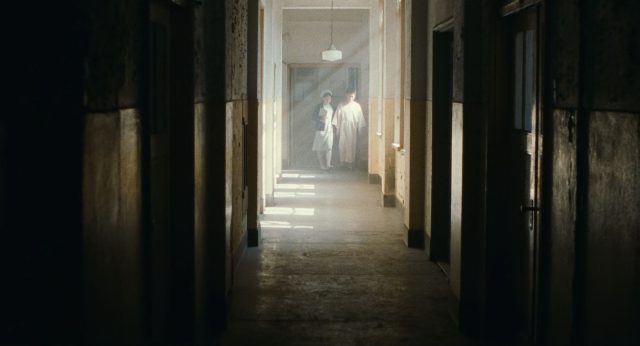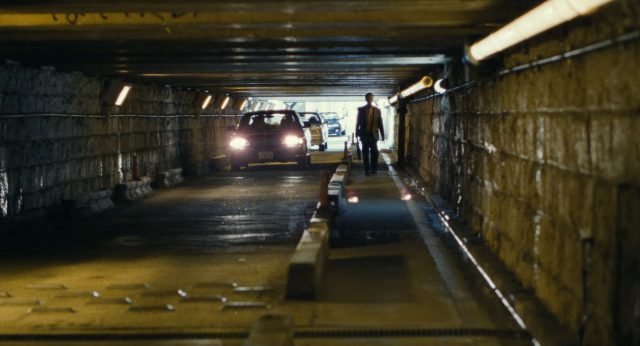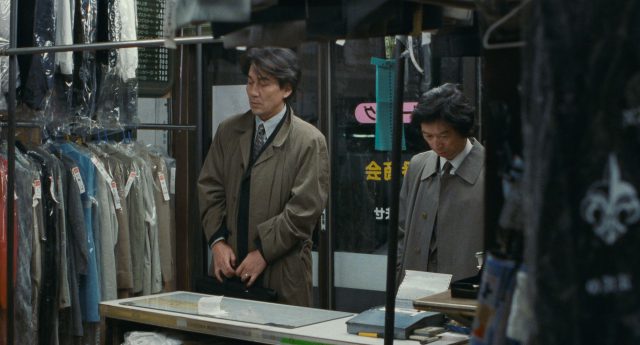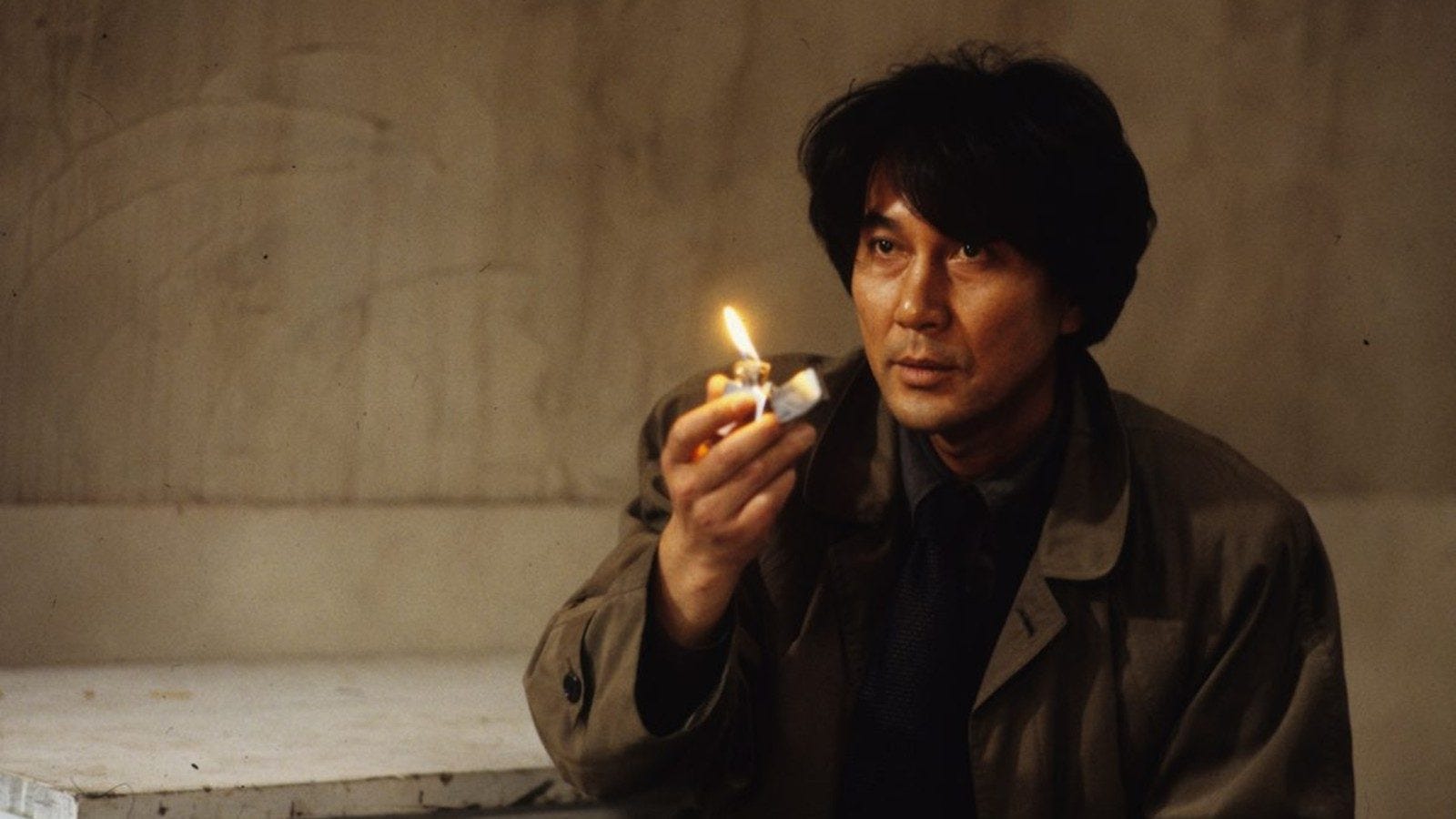
In late-1990s Tokyo, where the hum of fluorescent lights masks a deeper societal malaise, Kiyoshi Kurosawa’s Cure (1997) emerges as a hypnotic descent into psychological contagion—a nihilistic thriller that dissects the thin veil between civilised restraint and primal savagery. Blending the procedural rigour of a police investigation with the creeping unease of existential horror, the film follows Detective Kenichi Takabe (Koji Yakusho), a rumpled cop whose furrowed brow and weary gait betray both professional exhaustion and domestic unraveling. His wife, Fumie (Anna Nakagawa), is fracturing under an enigmatic dementia—her days a ritual of rigid domesticity, staring blankly at wilting flowers or wandering the apartment in disoriented loops, her forgetfulness a mirror to the film’s broader theme of collective amnesia. As Takabe juggles her care with his caseload, a rash of inexplicable murders grips the city: ordinary men—doctors, teachers, salarymen—slaughter strangers in fits of dazed fury, then confess with vacant eyes, unable to articulate motive or method, save for one ritualistic flourish: slashing an “X” into the victim’s neck, a mark evoking both ancient mesmerism and modern alienation.
Takabe’s pursuit, methodical yet increasingly unmoored, uncovers a spectral thread linking the killers: fleeting encounters with Mamiya (Masato Hagiwara), a floppy-haired lost boy turned amnesiac drifter, once a psychology dropout obsessed with 19th-century hypnosis. Mamiya drifts through the urban underbelly like a ghost in the machine—questioning passersby with his disarming refrain, “Who are you?”—a query that peels back layers of identity, igniting repressed rage in those it touches. Captured after a waterfront standoff, Mamiya materialises in interrogation rooms as an utterly unassuming cipher: soft-spoken, wide-eyed, his memory a void that frustrates Takabe’s forensic logic. Yet in their tense exchanges, Mamiya’s gaze exerts a malign spell, probing Takabe’s fractures—his overwork, his wife’s decline—with chilling empathy: “It’s not good to work too hard. You look sicker than your wife to me.” Aiding Takabe is psychiatrist Makoto Sakuma (Tsuyoshi Ujiki), a bespectacled rationalist who dissects the crimes through criminology’s lens, musing, “No one can understand what motivates a criminal, sometimes not even the criminal,” while theorising a hypnotic “disease” that bypasses moral safeguards, turning suggestion into slaughter.
Kurosawa’s mastery lies in his detached, anti-procedural gaze, influenced by Ozu’s minimalist precision yet infused with oblique menace. Long, unnervingly plain takes unfurl across sterile apartments and fog-shrouded alleys, where sunlight filters in diffuse and blotchy, as if laced with black mould—a visual metaphor for the urban rot permeating everyday sterility. The camera, in dimension-distorting angles, treats people and objects with equal aesthetic indifference: a potted plant wilts in the corner like a silent witness, rain patters on windowsills during tense silences, and the “X” incisions gleam under harsh fluorescents, their stark geometry a counterpoint to the narrative’s hallucinatory drift. This unfussy, aloof style blurs psychiatric rationalism and the supernatural, escalating from clinical inquiry to a spreading societal sickness where hypnosis symbolises abstract traditions of influence—advertising jingles, polite facades, unspoken aggressions—that erode the self. Yakusho’s Takabe embodies this schism: outwardly stoic, inwardly fraying, his interrogations devolving into fevered standoffs where Mamiya’s whispers—”Even if you manage to hypnotise someone, you can’t change their basic moral sense”—echo like a virus in the psyche.
At its core, Cure diagnoses Japan’s polite respectability as a breeding ground for nihilistic violence, exposing repressed rage beneath compliance. The murders aren’t isolated aberrations but symptoms of a collective disorientation: Fumie’s dementia parallels the killers’ amnesia, Takabe’s exhaustion the drifter’s void, all feeding a general sense of everything being wrong in some way that cannot be articulated. Kurosawa skirts explicit social commentary, favouring an oblique form of horror that unsettles for how much exists outside the frame. Mamiya, no mere villain but a floppy-haired conduit for the unspoken, embodies the film’s existential terror: his “Who are you?” not just a trigger, but a mirror to the elusiveness of the real, fusing acting, set design, and camerawork into something akin to Antonioni’s Blow-Up—deriving dread from the gaps in understanding.
Well enough acted and directed, Cure advances Kurosawa’s claim as an important new voice in Japanese cinema, though it nods to predecessors in murderous mind games. Its ambient sense of dread lingers like a half-remembered nightmare, questioning whether evil is a hypnotic spell or an inherent rot in the social fabric—a bizarre series of murders that carves an indelible “X” into J-horror’s pantheon, leaving viewers in a hypnotic state, adrift between reality and delusion. As the credits roll, one wonders: in stripping away the self, does Mamiya cure or condemn? Kurosawa’s dark thriller offers no tidy resolution, only the unnerving thrill of the unanswered.

